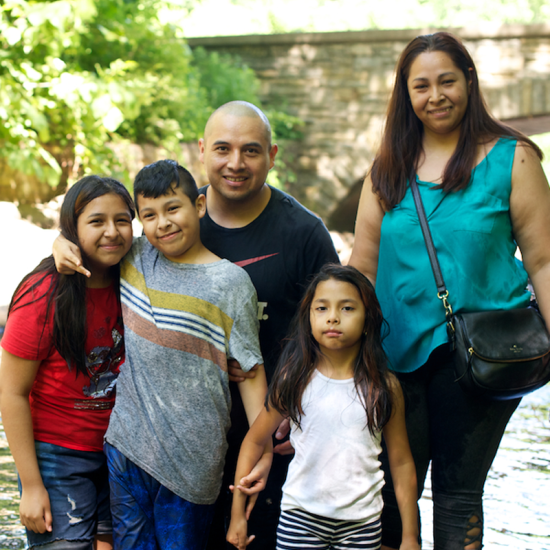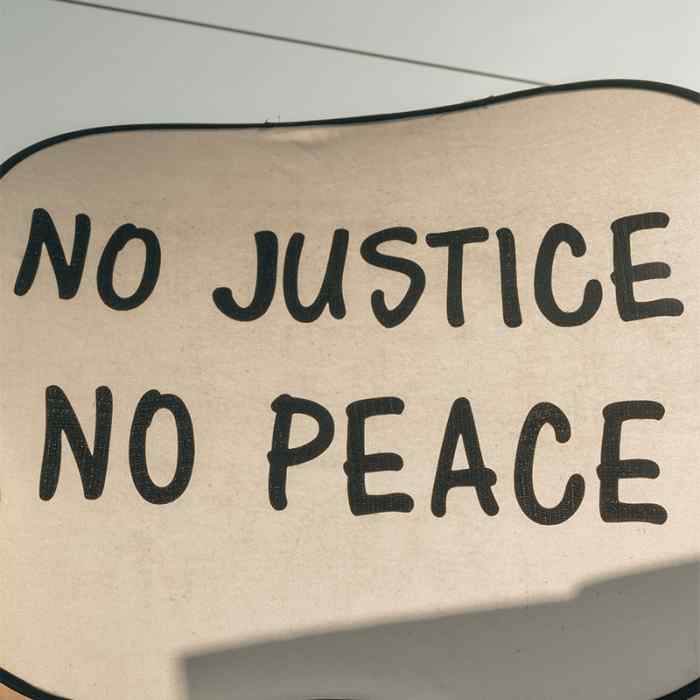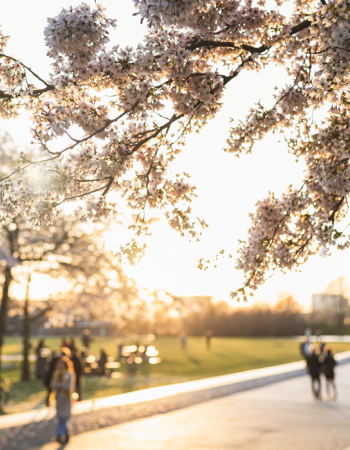
What Keeps us Safe? How Social Conditions Create Community Safety
Two years ago, my cyclist father was enjoying the last downhill mile of a long training ride. He was wearing a helmet and flashing LED taillight, and he trains yearly in urban bike safety courses. Still, an SUV driver didn’t see him, violated his right-of-way, and turned across the bike lane too close. Colliding with the vehicle and slamming onto the asphalt snapped 16 of his ribs and one shoulder blade and punctured one of his lungs.
My father did everything he could to keep himself safe; but certain conditions may have kept him safer. He is now part of a group pushing for more protected bike lanes across his city.
Social conditions contribute to violence prevention and community safety.
Research shows that certain social conditions are present where safety thrives, and community data shows where these conditions are present – or not. Understanding whether the conditions for safety are equally distributed across races and places provides important context, and could help businesses, nonprofit organizations, governmental agencies, foundations, and community organizations and leaders make data-driven decisions about where to invest resources to reduce the risk of violence.
Safe communities are communities where people have what they need.
Communities across the globe have contributed to research to understand the social conditions where safety thrives. We can and do know what communities with the lowest levels of community violence (which includes interpersonal violence, but excludes violence committed by the military, police, or other state actors) have in common. These common factors, or the social conditions where safety thrives, include:
- Economic stability, including low unemployment; abundant living wage jobs; low cost of living; low poverty rates; and small gaps between rich and poor
- Neighborhood connections, including high rates of homeownership; socioeconomically mixed neighborhoods; high levels of trust between neighbors; low housing turnover
- Positive community engagement, including high rates of voting; community influence on local laws and policies; many youth engagement opportunities outside of school (arts, recreation, volunteering, etc); and youth workforce development programs.
- Quality education, including high-quality, affordable, early childhood education; high rates of students feeling connected and engaged in school; low truancy and suspension rates; high rates of students achieving at or beyond grade-level
- Quality health care, including high rates of health insurance coverage; culturally meaningful mental and chemical health supports
- Quality physical environment, including clean and vibrant public spaces; healthy tree coverage; high density organizations and businesses that foster connections (civic engagement organizations, youth programs, local coffee shops, etc., instead of liquor stores and payday loan businesses)
How we design the communities where we rest, work, and play leads to different risks of community violence. And the communities that are safest are the communities where people have what they need – for economic stability, to connect with their neighbors, to have a voice in policy, to be supported in achieving what they’re called to do.
Community data shows where social conditions for safety are present, or not.
People across the U.S. regularly contribute to wide-scale community surveys, such as those administered by the U.S. Census Bureau. Data from these surveys, and more local residential studies such as the Brooklyn Park Resident Survey, show where the social conditions where safety thrives are present – or not.
Wilder Research recently analyzed U.S. Census and Brooklyn Park Resident Survey data. We found that the social conditions where safety thrives are not equally distributed across races nor places in Brooklyn Park. White residents were more likely than Black, Indigenous, and other residents of color to live in the social conditions where safety thrives; so too were residents living north of 85th Ave N as compared to their neighbors in the southern neighborhoods. A quick glance at a map of crime in Brooklyn Park, and of anti-Black racial disparities in arrests in Brooklyn Park, mirrors these inequities. Police report more crime on the south side of Brooklyn Park than the north, and arrest White people at a rate lower than their proportion of the population.
Systemic racism plays a role in creating communities where White people are more likely than their Black and Indigenous neighbors to live in the conditions where safety thrives. For example, the unconstitutional practice of restricting real estate sales to certain races or religions dates back to the mid-1800s and persisted for nearly a century. This allowed White people access to – and excluded Black, Indigenous, Jewish, and other marginalized people from – higher-value homes and neighborhoods with more amenities. This practice, while no longer legal today, has ripple effects. It allowed for accumulation of wealth in the form of home equity by generations of White people and unfair exclusion from that wealth for others. It contributes to racial segregation within cities and towns, and continues to affect public school quality and outcomes, as public school funding is still greatly impacted by the property taxes raised in a community. Formerly White-only neighborhoods have more shade trees, and temperatures are hotter in historically redlined neighborhoods. Higher temperatures risk more violence.
What are conditions like in the communities where you rest, work, and play?
An excellent thought exercise from the Ella Baker Center for Human Rights calls us to imagine what safety feels like. What contributes to your being – and feeling – safe? What conditions of safety does your community need? What are leaders doing – or not – to saturate your communities with the social conditions where safety thrives?
We invite you to reflect and dig in further.
- Read more about the Black-led organizing for more safety in Minneapolis
- Read more on our research on improving community safety and policing in Brooklyn Park
- Get in touch if you’re curious to see what data from your community say about the social conditions for safety.
Lindsay Turner was a research associate at Wilder Research.
What contributes to your being – and feeling – safe? What conditions of safety does your community need? What are leaders doing – or not – to saturate your communities with the social conditions where safety thrives?
Related content

